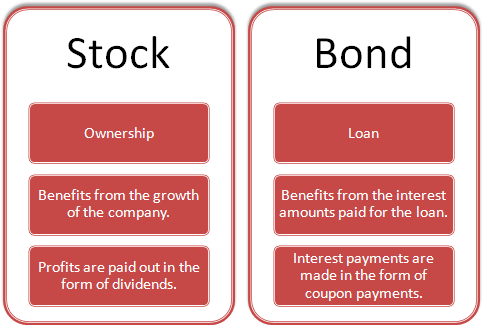The Basics Of Bonds
Post on: 31 Май, 2015 No Comment

The bond markets are a place often devoid of the retail or part time investor. It is often for professional investors, pension and hedge funds. and financial advisors, but that doesn’t mean that part-time investors should steer clear of bonds. In fact, bonds play an increasingly important part in your portfolio as you age and,
because of that, learning about them now makes good financial sense.
What Is a Bond?
When you purchase a stock. you’re buying a microscopic stake in the company. It’s yours and you get to share in the growth and also in the loss. A bond is a loan. When a company needs funds for any number of reasons, they may issue a bond to finance that loan. Much like a home mortgage, they ask for a certain amount of money for a fixed period of time. When that time is up, the company repays the bond in full. During that time the company pays the investor a set amount of interest, called the coupon. on set dates, often quarterly.
There are many types of bonds including government, corporate, municipal and mortgage bonds. Government bonds are generally the safest, while some corporate bonds are considered the most risky of the commonly known bond types.
Ratings
Bonds are rated by popular agencies like Standard and Poor’s, and Moody’s. Each agency has slightly different ratings scales, but the highest rating is AAA with the lowest being C or D, depending on the agency. The top four ratings are considered safe or investment grade, while anything below BBB for S&P and Baa for Moody’s is considered high yield or junk bonds. Although larger institutions are often permitted to purchase only investment grade bonds, high yield or junk bonds have a place in an investor’s portfolio as well, but may require more sophisticated guidance.
Pricing
Bonds are generally priced at a face value (also called par) of $1,000 per bond, but once the bond hits the open market, the asking price can be priced lower than the face value, called a discount, or higher, called premium. If a bond is priced at a premium, the investor will receive a lower coupon yield, because they paid more for the bond. If it’s priced at a discount, the investor will receive a higher coupon yield, because they paid less than the face value.
Bond pricing isn’t as volatile as stocks and often responds more to interest rate changes than other market conditions. This is why investors looking for safety and income often prefer bonds over stocks as they get closer to retirement.
Purchasing
Most bonds are still traded over the counter through electronic markets. Many brokers charge larger commissions for bonds, since the market isn’t as liquid and still requires calling bond desks in many buy and sell scenarios. Other times, a broker-dealer may have certain bonds in their inventory and may sell to their investors directly from their inventory. You can often purchase bonds through your broker’s website or call with the bond’s unique ID number, called the CUSIP number. to get a quote and place a buy or sell order.
Taxes
Because bonds pay a steady dividend, called the coupon, owners of bonds have to pay dividend taxes on the funds received. For this reason, bonds are best kept in a tax sheltered account, like an IRA, to gain tax advantages not present in a standard brokerage account.
If you purchased a bond at a discount, you’ll be required to pay capital gains tax on the difference between the price you paid and the bond’s par value, normally $1,000 per bond, but not until the bond matures and you receive the face value of the bond.
Alternatives
If you want the income earning power of a bond, but you don’t have the funds or don’t want to own individual bonds, consider a bond ETF or bond mutual funds. These are well diversified funds that give you exposure to many different bonds, and pay a monthly or quarterly dividend. Because some bonds have a minimum purchase amount, smaller investors may find these products more appropriate for their smaller amount of capital, while remaining properly diversified.
The Bottom Line
Most investors, regardless of age, should have at least a small amount of their portfolio allocated to fixed income products like bonds. Bonds add safety and consistency to a portfolio. Although there is a risk that a company may default and cause a large loss, investment grade bonds rarely default, but along with safety comes a lower rate of return.














